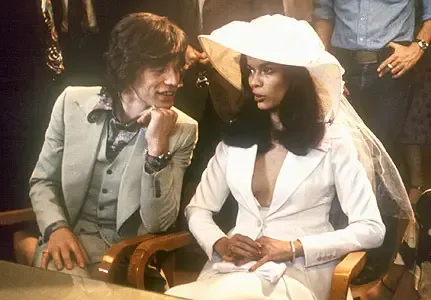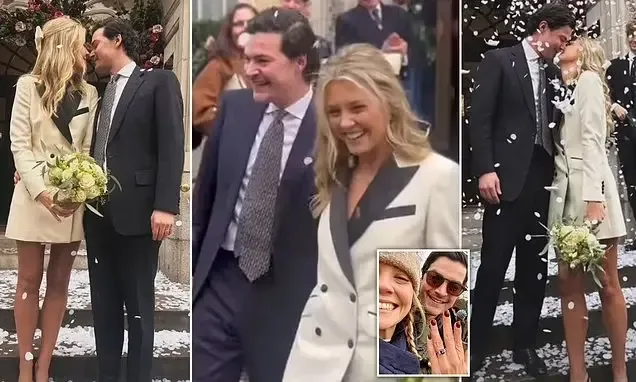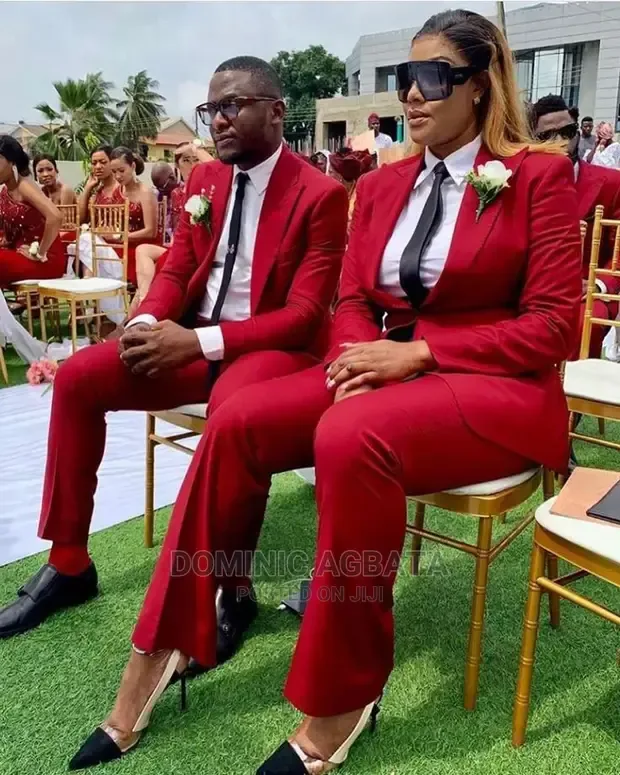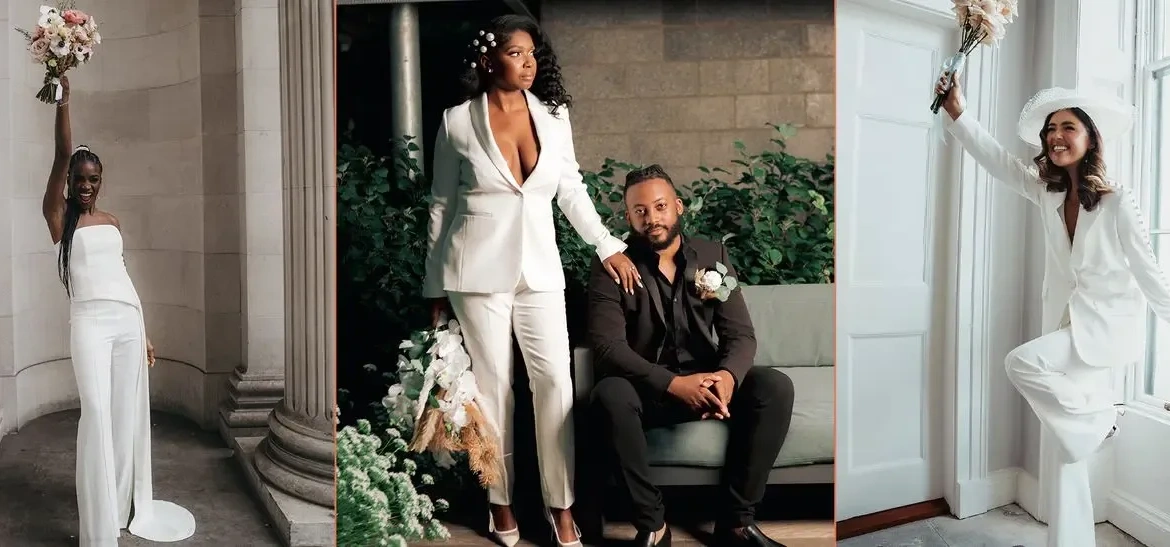When Bianca Pérez-Mora Macías married Mick Jagger in May 1971 at the Saint-Tropez courthouse, her choice of attire—a white Yves Saint Laurent tuxedo jacket paired with a veiled hat—was nothing short of revolutionary. At the time, it was a bold departure from the traditional bridal gown, sparking both admiration and raised eyebrows. Fast forward five decades and this unconventional outfit and iconic look has become a cornerstone of modern bridal fashion, particularly for civil ceremonies in urban settings.
Today, the influence of Bianca Jagger’s trailblazing ensemble is unmistakable. Outside city registry offices, it’s not uncommon to see brides channeling her sleek, tailored aesthetic. Take Phoebe Knatchbull, granddaughter of the First Earl Mountbatten of Burma and cousin to Princes William and Harry, who recently married Leopold Glover at London’s Kensington and Chelsea Registry Office. Her choice of an ivory tuxedo dress with black detailing, a matching bow in her hair, and a modest posy of white roses was a masterclass in understated elegance.

Phoebe’s decision to embrace tailoring is hardly surprising, given her sister Daisy’s role as the founder of Knatchbull, the first women ’s-only tailor on London’s famed Savile Row. She describes the allure of a beautifully cut suit as “undeniably powerful,” offering a “lovely alternative to the conventional wedding dress while remaining just as romantic.”

This trend, while rooted in Bianca Jagger’s audacious style, has been further popularized by other high-profile brides. Carrie Bradshaw’s “by no one” skirt suit in the first Sex and the City movie and Amal Clooney’s wide-leg Stella McCartney ensemble for her Venice nuptials are prime examples of how tailoring has become a symbol of confidence and modernity in bridalwear. The pandemic’s impact on wedding traditions has only accelerated this shift, encouraging brides to embrace more playful, daring, and personalized styles.
Once associated with second marriages or mature brides eschewing the traditional white gown, tailored bridal looks have now become a mainstream choice for city brides of all ages. “Tailoring is particularly popular for the town hall wedding,” says Annelise Sealy, founder of The Fall Bride, an East London boutique known for its fashion-forward bridal aesthetic. “Because of the way weddings are licensed in the UK, many couples opt for a registry wedding first, making tailoring a practical and stylish choice.”
Beyond its practicality, a tailored bridal suit offers a striking visual statement, particularly in wedding photographs. “There is something empowering about suiting because we imagine a man should be wearing it,” says Sarah Corbett-Winder, founder of suit brand Kipper Club, which is expanding into the bridal market. “Women making it their own makes suiting exciting, fun, and unpredictable.”
The versatility of bridal suiting is another key factor driving its popularity. Whether for a minimalist city hall ceremony or a multi-day celebration requiring multiple outfit changes, tailored pieces offer endless possibilities. High-street brands like Whistles and M&S have also embraced this trend, making it accessible to brides with varying budgets. Whistles’ Andie trouser suit and Sienna Miller’s three-piece ivory look for M&S are just two examples of how the high street is catering to this growing demand.
However, the rise of the bridal suit isn’t limited to the classic tuxedo. Phoebe Knatchbull’s tuxedo minidress highlights the growing popularity of hybrid styles, such as the Galvan blazer dress, which blurs the line between a dress and a suit. “It gives you a put-together, easy-to-wear look, while still being a dress,” notes Sealy.
For those considering a tailored bridal look, attention to detail is paramount. The fit, cuff length, and leg silhouette must be meticulously crafted to ensure a flawless appearance. “Our bespoke tailoring ensures a flawless fit that enhances the natural silhouette in a way that dresses often cannot,” explains Daisy Knatchbull. “Every detail is meticulously crafted to create a piece that exudes confidence and effortless beauty.”
Sustainability and re-wearability are also significant factors in the appeal of bridal suiting. In an era where conscious consumption is increasingly prioritized, the idea of investing in a piece that can be worn beyond the wedding day is highly appealing. “Every Knatchbull garment is designed to be cherished for years to come,” Daisy adds. “Being able to wear your blazer again and again to other important life events gives it a life far beyond the cutting of the cake, which is in itself incredibly romantic.”

As bridal fashion continues to evolve, the tailored suit has emerged as a symbol of modernity, empowerment, and individuality. Whether inspired by Bianca Jagger’s groundbreaking style or driven by a desire for practicality and sustainability, more women are saying “I do” to this unconventional choice. In 2025 and beyond, the bridal suit is poised to remain a defining trend, redefining what it means to be a bride in the modern era.
